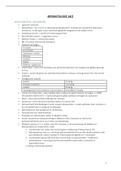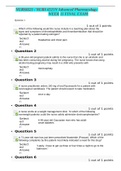Samenvatting
Samenvatting voor mondeling examen Seminar HRS
- Vak
- Instelling
- Boek
Deze samenvatting vat de hoofdstukken 2 t/m 5 van het boek "Strategy, HRM, and Performance" samen en vormt een goede basis voor het mondelinge examen dat aan het begin van het vak plaatsvindt.
[Meer zien]













